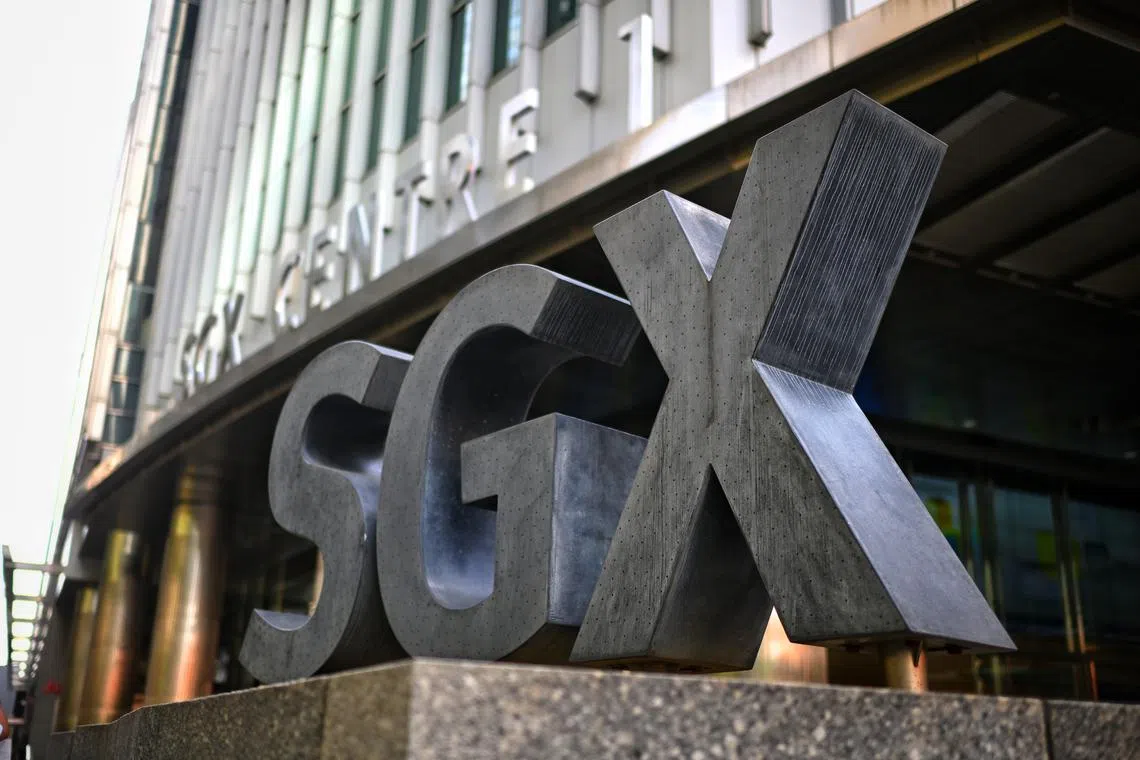Singapore could see more capital inflows in 2025 as Trump returns
Sign up now: Get ST's newsletters delivered to your inbox

Singapore equities have performed exceptionally well so far this year with a total return of around 30 per cent.
ST PHOTO: SHINTARO TAY
Follow topic:
SINGAPORE - Singapore could see more capital inflows in 2025, with the stock market poised for another year of outperformance as investors turn defensive and favour the safe haven amid uncertainties over new US policies.
New measures to revitalise the Singapore stock market could also boost trading liquidity and lift valuations as much as 20 per cent, narrowing the discount to global peers, said Mr Wilson Ng, an equity analyst at Morgan Stanley Asia.
The Singapore equities market has performed exceptionally well so far in 2024, with a total return of around 30 per cent. It has outperformed nearly all markets in the Asia-Pacific region and most major markets globally.
Said Mr Ng: “2025 could be another fruitful year for Singapore against a relatively challenging regional market backdrop.”
Policy shifts from US President-elect Donald Trump’s incoming administration could have far-reaching implications for global markets, including in the Republic, he said.
Added Mr Ng: “Given a more challenging outlook for Asia-Pacific equities in the year ahead, coupled with uncertainties over new US policy, Singapore could benefit from capital flows pivoting more defensively in favour of safe havens.”
When investors take a defensive stance, they take on as little risk as possible and choose stable investment products or markets that have proven themselves over the years.
Goldman Sachs’ chief Asia-Pacific strategist Timothy Moe likes Singapore for its defensive market and good dividend yields.
He has a “constructive” view on the three local banks – DBS, UOB and OCBC – which account for more than 50 per cent of the benchmark Straits Times Index’s (STI) total value.
All three banks delivered good profit growth in the third quarter ended Sept 30, 2024: DBS’ net profit grew 15 per cent from a year ago to $3.03 billion; UOB’s net profit jumped 16 per cent year on year to $1.61 billion; and OCBC’s net profit climbed up 9 per cent to $1.97 billion.
The banks also offer attractive dividend yields of 5 per cent to 6 per cent.
“In an environment where you got somewhat higher for longer interest rates, maybe steeper yield curve, that’s typically better for banks in general and we think that’s true also for Singapore banks,” Mr Moe said.
Macquarie Capital’s head of Asean research Jayden Vantarakis has a target of 4,000 for the STI in 2025. It is currently trading at around 3,751.
He likes the three banks’ strong capital positions.
He noted that DBS and UOB have shown intentions to return surplus capital to shareholders, and that the ball was in OCBC’s court to follow suit. He has raised his price target for DBS to $45.50, UOB to $39.40 and OCBC to $16.48.
Among the Singapore-listed real estate investment trusts, or S-Reits, Mr Vantarakis’ preference is for industrial Reits. He listed Keppel DC Reit, a data centre Reit, and CapitaLand Ascendas Reit as the two preferred Reits.
Among the telecommunications companies, the analyst likes Singtel.
“Potential sector consolidation is a positive thematic for the entire sector in 2025. We expect Singapore’s four player telco market will consolidate into three,” Mr Vantarakis said.
Besides Singtel, the other mobile network operators in Singapore are StarHub, M1 and Simba Telecom.
Goldman Sachs expects Singapore’s economic growth to decline to 2.1 per cent in 2025 from 3 per cent in 2024, dampened by a global trade slowdown and tariff risks.
Growth for Asia excluding Japan in 2025 is projected to slow to 4.5 per cent from its previous estimate of 4.9 per cent.
Fresh US tariffs under the second Trump administration could shave 0.3 percentage to 0.8 percentage points off the growth of Asean-5, a region which comprises Indonesia, Malaysia, the Philippines, Singapore and Thailand, said Goldman Sachs.
This assumes an additional 20 per cent tariff on China imports.
Vietnam and Malaysia could gain export share if trade shifts away from China, Goldman Sachs said.
More aggressive tariff policy from the US could reduce Asean-5 growth by another 0.7 percentage points, with the largest hit to Singapore given its reliance on global trade, it said.
Despite this, Morgan Stanley believes the Republic is relatively well positioned in the region, given its trade deficit with the US and low corporate revenue exposures to North America.
Globally, the S&P 500 – the index which tracks the largest companies listed in the US – is poised to gain about 30 per cent in 2024. It is currently shy of 6,000 and up 26 per cent from the start of 2024.
Goldman Sachs, UBS and Morgan Stanley expect the S&P 500 to reach 6,500 in 2025.
While it may seem like 2025 has a tough act to follow, Carson Group chief market strategist Ryan Detrick said the odds are pretty high that another year of big gains is ahead for investors.
Mr Detrick said history suggests stocks will likely extend their bull rally in 2025, and deliver returns higher than their average annual return of about 10 per cent.
Since 1950, there have been eight times the S&P 500 gained 20 per cent or more two years in a row. In six of those eight times, the third year saw positive gains, with an overall average return of 12 per cent.
His bullish view for the stock market in 2025 is supported by expectations of a solid US economy and rising profits of American companies.
Deutsche Bank said that even if the S&P 500 does not repeat 2024’s stellar run in 2025, the benchmark index will still score attractive double-digit returns.
It expects the S&P 500 to reach 7,000 by the end of 2025, underpinned by robust investor activity and strong corporate share buybacks.
There are also signs that the equity cycle has not yet peaked.
“We see various aspects of the cycle still to come, including a move from de-stocking to re-stocking; a pickup in capital expenditure outside tech; a manufacturing recovery; a rise in consumer and corporate confidence; a recovery in capital markets as well as mergers and acquisition activity; a pickup in loan growth; and rest of the world growth,” Deutsche Bank said.


